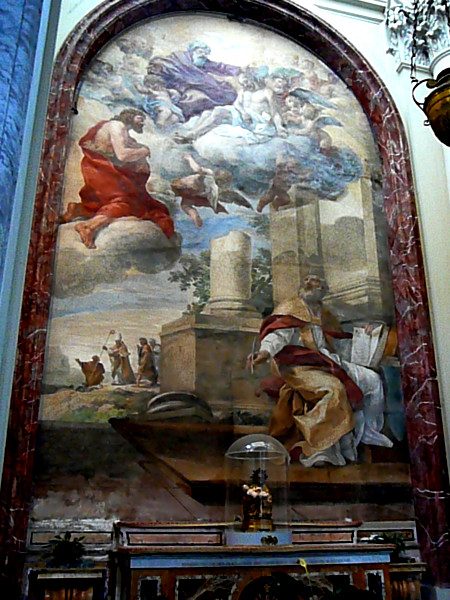
St. Hilary
Fresco
Chapel of St. Hilary, Lateran Basilica, Rome
Through his treatises and his advocacy at church councils, St. Hilary was a vigorous champion of catholic doctrine on the Trinity, in which Father and Son are co-eternal and "consubstantial," against the Arian teaching that he was a creation of the Father. The treatises are referenced by the book and pen in his hands, and his travel to those councils is represented in the background.
The upper half of the painting appears to be an answer not to Arianism but to "Adoptionism," a similar doctrine that developed in later centuries. Adoptionism held that Jesus was not God's eternal son but became divine when the Father "adopted" him after his death on the cross (Catholic Encyclopedia, s.v. "Adoptionism"). The fresco may be a challenge to that belief, with the figure in red representing the eternal Son and the recumbent figure representing the Son as the historical Jesus, here being presented to the Father after his death on the cross.
Read more about St. Hilary.
Photographed at the Lateran Basilica by Richard Stracke, shared under Attribution-NonCommercial-ShareAlike license.